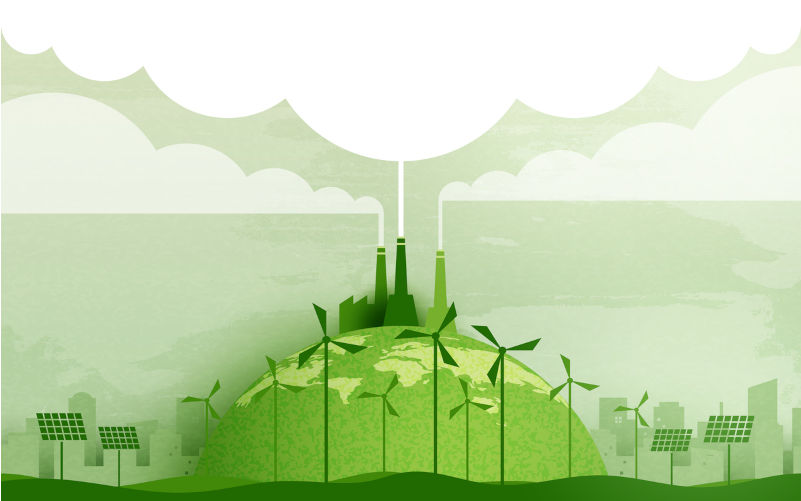The problem of climate change denialism
October 22, 2025
It is one of the great public debates of our time: is climate change happening or not? If it is, is humanity partly responsible? Either way, is it problematic and, if so, should we act?
To the first question there can only be one answer, and it shouldn’t be contentious. Climate change is happening, as it always has. The second question is harder to answer definitively, but we’d be unwise to conclude that human activity is not playing a part. There are sound scientific reasons to believe that our releasing greenhouse gases into the atmosphere has trapped insolation and helped produce warming, from which many changes have flowed.
Most of these changes are at least potentially problematic for the future of human and other life on earth. If that is the case, we most certainly should be looking at what can be done to mitigate the changes or adapt to them.
Yet, many people are in denial about these questions, and their denialism is deep-seated. Climate change is too slow for us to perceive, not to mention inconvenient to acknowledge. It is difficult and costly to arrest or reverse, too, and there is no short-term consequence at the individual level for failure to do so. These things make climate change difficult to deal with: there is little pressure coming from the grass roots of societies in Western countries (which have so far produced most of the problem) to force the hands of politicians. Powerful vested interests, especially in the fossil fuel industries, oppose action.
China and India, of course, are catching up in the production of greenhouse gas emissions. But all nations produce them and all should own the need to deal with what might turn out to be very serious problems.
It is useful to examine the positions of the deniers and to seek an understanding of their motives. Some have a vested interest in the processes that produce warming, and some produce justifications for their stances from little evidence. Some speak from an inbuilt prejudice against science. Donald Trump and the fossil-fuel lobbyists are examples of those who are invested in the way things have been done in recent times: Trump is wedded to industrial processes that have produced great wealth in his country (and others). He does not wish to see those processes discarded. He is also, like Barnaby Joyce and Tony Abbott in Australia, doctrinaire and anti-science. All three defend wealth and the wealthy.
Joyce’s case is built upon the fact that Australian energy prices have remained stubbornly high despite the gradual replacement of fossil fuels by renewables. He rails against electricity prices and cites the many cases of countries that are doing little to stop climate change.
Australia itself can do little, he argues, and what we can do will be expensive, so we should not bother.
What Joyce fails to do is confront the evidence of climate change and the possibility that it will do great damage to humankind in the future. Sea level rise, presumably linked to increasing atmospheric and oceanic temperatures and the consequent melting of the polar ice masses including sea ice, is incontrovertible. It is easily measured. It is abundantly clear that further increases in sea levels will be dangerous to several atoll countries and indeed to anything on low-lying land near the coast. The viability of many cities will be compromised.
The deniers focus on the problems of proposed strategies like replacing fossil-fuel burning with renewable sources of energy. They largely ignore the difficulties that future climate change (and sea level rises) could bring. They don’t recognise scientific projections of past trends or comments about potential tipping points, either belittling or ignoring them.
The increase in sea level has momentum: it is rising inexorably and at an increasing rate. Scientists tell us that it might rise by a metre by the end of this century, which would be disastrous. The obvious route to avoiding that outcome is to cut the emissions of greenhouse gases which are behind the temperature rises and the melting of the snow and ice. But it has become difficult to achieve the political consensus necessary.
The world is trapped here: the first requirement is a deep, widespread recognition that there is a problem which we must unite to address, but we are far from that. Much is needed to convince the grassroots and politicians that here is a problem that must be addressed.
Yet if temperature increases and sea-level rises continue, the world will eventually have no option but to act. The later this is realised, the harder it will be to develop and apply the needed actions. An initial requirement is an international consensus as early as possible. In an age of conspiracy theories and sometimes reluctant public acceptance of science as an identifier of problems and a route to success in managing them, this will be hard to achieve.
“Net zero”, which Joyce and many others reject, should be the lowest of our aims. We need to have lesser concentrations, not just stabilisation, of carbon dioxide in the atmosphere. To achieve this will require all nations to act and their citizens to bear the cost of that action. The likelihood is that living standards will be affected negatively, which ensures that most people will not get on board.
Getting grassroots commitment is key here, but we are far from achieving it. In the end, when even the hard-core deniers can see that climate change and sea-level rise are problems, we will recognise that most of the fossil carbon should stay in the ground. The question is whether we will get to that realisation soon enough.
The views expressed in this article may or may not reflect those of Pearls and Irritations.

